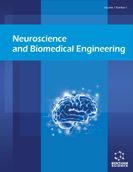Abstract
Background: Sleep spindles have been related to the development of the human brain. An electroencephalography band power analysis previously distinguished sleep spindles in autistic children from those in typically developed children. However, prior time domain analysis has been limited.
Objective: The objective of this study was to understand the characteristics of sleep spindles in autistic and typically developed children under sedation. Methods: Autistic (6.30 ± 1.88 years) and typically developed children (6.14 ± 2.05 years; n = 8/group) participated in this study. Chloral hydrate sedation was used in combination with electroencephalography under medical supervision. Data recording started once subjects were asleep, continuing for ten minutes. The sigma band frequency was obtained using an FIR band pass filter. Rectification and low pass filtering were used to detect candidate sleep spindles. The sleep spindle density and duration were determined. Results: Sleep spindles predominantly occurred in anterior brain regions, especially in the frontal pole and frontal regions. Sigma activity in the autistic group increased compared to the control group, most predominantly in the frontal pole and frontal regions. In these regions, the autistic group showed greater sleep spindle density than controls. Further, sleep spindle duration was slightly longer in the autistic group than in the control group. Fp1 and Fp2 were the preferred electrode sites to distinguish between the two groups. Conclusion: Autistic children may have different brain properties than typically developed children, especially in frontal regions. Sedation during electroencephalography has utility in the analysis of brain abnormalities in childrenKeywords: Sleep spindles, autism, children, sedation, sigma activity, electroencephalography.
Graphical Abstract
 21
21

